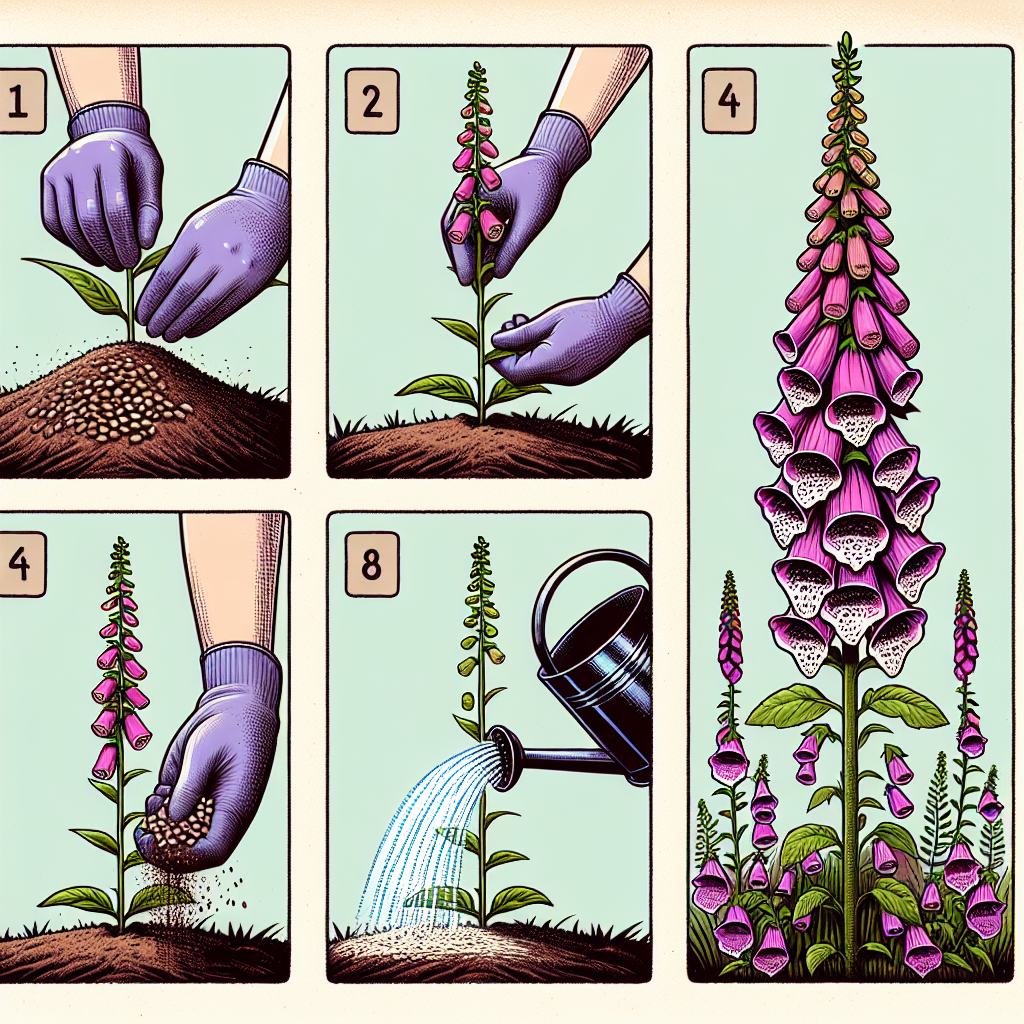
How to plant foxglove
Growing the Enchanting Foxglove: A Complete Guide
Foxgloves, known scientifically as Digitalis, are dazzling biennial or perennial plants that bring a touch of whimsy to any garden. Characterized by their tall spikes adorned with tubular flowers, foxgloves thrive in a variety of conditions, making them a popular choice among gardeners and landscapers. In this comprehensive guide, we will explore different aspects of how to plant foxglove, ensuring that you achieve stunning blooms in your garden.
Understanding Foxglove: A Brief Overview
The foxglove plant is native to Europe and parts of Asia but has adapted well to various climates worldwide. Its name, "foxglove," is believed to have arisen from the shape of the flowers, resembling the fingers of a glove, or could even refer to “folk's glove.” The flowers come in a multitude of colors including purple, pink, white, and yellow.
While foxgloves are admired for their beauty, it is important to note that they are toxic if ingested, particularly for pets and children. Therefore, caution should be exercised when planting them in areas where young ones or animals might have access.
Choosing the Right Location
Foxgloves prefer a well-drained soil and thrive in partial shade to full sunlight. Before you begin the process of planting, it’s essential to assess your garden space for the ideal conditions:
- Sunlight: Foxgloves prefer partial shade, particularly during hot summer days. They can tolerate full sun but may require more watering.
- Soil: Well-draining soil is critical. Sandy or loamy soil will support their root systems best.
- Moisture: Regular watering is important, especially during dry spells. However, be cautious of waterlogging.
Preparing the Soil
The foundation of successfully establishing foxglove plants lays in proper soil preparation. Here’s how to prepare your soil before planting:
- Test Soil pH: Foxgloves prefer slightly acidic to neutral pH (6.0 - 7.0). Conduct a soil test to determine pH levels.
- Amend the Soil: Add organic matter such as compost or well-rotted manure to enrich the soil and improve its drainage capabilities.
- Tilling: Break up the soil to about 12 inches deep and create a loose, aerated base for planting.
How to Plant Foxglove
Now that you have a suitable location and well-prepared soil, it’s time to get into the specifics of how to plant foxglove. Below are step-by-step instructions:
Step 1: Choosing Seeds or Seedlings
You can start foxgloves from seeds or purchase young plants from a nursery. Each method has its advantages:
- Seeds: Starting from seeds allows for a wider variety of species and colors.
- Seedlings: Buying seedlings gives you a head start, as you will see flowers sooner.
Step 2: Sowing Seeds
If you opt for seeds, here's how to sow them effectively:
- Timing: Sow seeds indoors 6-8 weeks before the last frost date, or directly in the garden after the frost.
- Direct Sowing: Scatter the seeds on the surface of the soil and lightly press them down. Foxglove seeds require light to germinate, so they should not be buried.
- Watering: Mist the area gently to moisten the soil. Avoid overwatering.
Step 3: Transplanting Seedlings
If you have purchased seedlings, follow these steps:
- Acclimatization: Before transplanting, harden off the seedlings by gradually exposing them to outdoor conditions for a week.
- Spacing: Space seedlings about 12-18 inches apart to allow for mature growth.
- Transplanting: Dig a hole slightly larger than the root ball of the seedlings. Place the seedling in the hole and cover with soil. Water gently afterwards.
General Care and Maintenance
Once your foxglove is planted, some maintenance routines will help them thrive:
- Watering: Keep the soil consistently moist, especially during dry spells but avoid waterlogging.
- Mulching: Apply a layer of mulch to retain moisture and suppress weeds.
- Fertilizing: Use a balanced fertilizer once in early spring to promote growth.
- Pruning: Deadhead flowers after blooming to encourage further flowering and to prevent self-seeding.
Handling Pests and Diseases
Foxgloves are relatively resilient, but they can encounter occasional pests and diseases. Here’s how to protect your plants:
- Pests: Watch out for aphids, snails, and slugs. Treat infestations immediately using organic pesticides or natural remedies.
- Diseases: Ensure good air circulation around your plants to prevent fungal diseases, especially in humid areas. Remove any infected plants promptly.
Harvesting Seeds for Future Planting
If you want to continue growing foxgloves in your garden, harvesting seeds is the best way to maintain your floral displays.
- Timing: Wait until the flowers have wilted and seed pods develop. This usually occurs in late summer to early fall.
- Collecting Seeds: Once the pods turn brown, cut them open gently to extract seeds. Store them in a cool, dry place.
- Labeling: Label your seed packets with the date and variety to keep track of your collection.
When to Plant Foxglove
Timing is vital in gardening. Depending on your climate, you can determine the best time for foxglove planting:
- Spring Planting: Ideal for regions with milder climates; plant after the last frost date.
- Fall Planting: In zones with very cold winters, sowing seeds in the fall can be advantageous as they will sprout in spring.
Conclusion
Growing foxgloves can enhance the beauty of your garden while providing a habitat for various pollinators. Whether you’re planting seeds or establishing seedlings, adhering to the right techniques ensures healthy growth and vibrant blooms.
In summary, it’s essential to choose the right conditions, prepare your soil appropriately, and follow essential care guidelines for successful growth. Now that you are equipped with the knowledge on how to plant foxglove, get ready to add these stunning plants to your garden!
```By Guest, Published on September 22nd, 2024